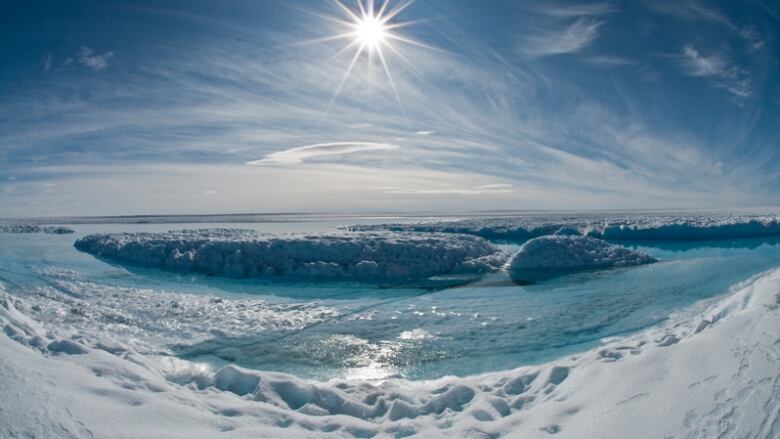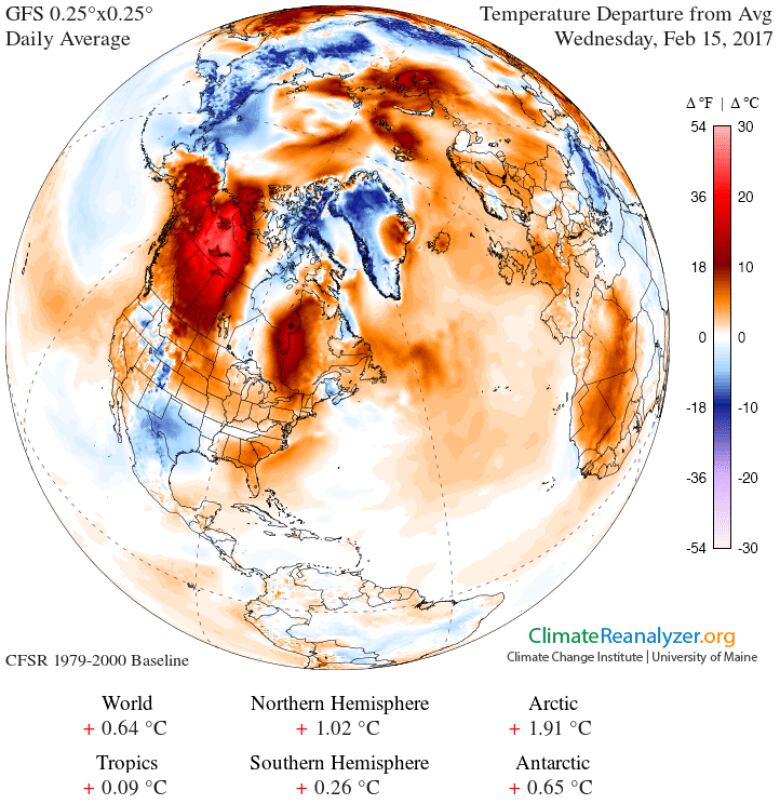Scientists propose refreezing Arctic in battle against climate change
Project would involve 10 million devices and cost $500 billion US

A group of researchers has proposed using wind-powered pumps to refreezethe Arctic.
The proposal seems ambitious: it involves 10 million devices deployed over 10 per cent of the Arctic, at a cost of $500 billion US.
Lead author of the paper, astrophysicist StevenDesch, concerned about what some climatologists predict to be an ice-free Arctic by 2030, challenged a group of his students at Arizona State University to develop a method to refreeze the Arctic.
Without ice to reflect sunlight into space, heat continues to be absorbed in the region. This, in turn,causes further warming and accelerates global climate change. While cutting down on carbon dioxide emissions is the solution various companies, researchers and governments are aiming for, Desch was concerned that it wasn't a "real-world" solution.
Humans will never be a negligible part of the climate system; we're always going to be a driver.- Steve Desch, Arizona State University
On paper, the theory works: pumping 1.3 metres of water to the surface would increase the ice's thickness byone metre per decade.
But, as the study notes, there are questions: Would the pumps operate in the harsh Arctic conditions? Could the ice production be scaled over a larger area? And whatimpact would the use ofso many pumps have on the environment?However, Desch said,it's a start to a much-needed conversation.
"We want to provoke discussion, get people thinking about the Arctic in particular, about the need to intervenestrongly there, because nothing we do on the world scale is going to be fast enough to save this summer sea ice in the Arctic," Desch said.
- Arctic temperatures soar to 30 C above normal
- Warmer Arctic Ocean temperatures delay sea ice formation
Arctic situation 'crazy stuff'
National Snow and Ice Data Center (NSIDC) director Mark Serreze, who was not associated with the study, said that the paperis a serious effort to tackle an ongoing and important climate change issue.
This year, the Arctic has been experiencing one of the strangest winter seasons glaciologists have seen, he said.
High-pressure systems and a wandering jet stream havebeen pulling warmer air to higher latitudes, including well into the Arctic. In November and December, the region reached temperatures almost 20 C above normal. Instead of consistent ice growth, there were periods where the ice ceased to expand. The pattern, Serreze said,has become stuck.
The sea ice maximum in the Arctic occurs in March. In 2015, a record low was set, followed by another record in 2016. On Tuesday, the NSIDCannounced that preliminary data suggests that 2017 will likelybe another record low.
There have been periods this past season where temperatures have been close to the melting point, Serreze said. "I mean, this is crazy stuff."

Serreze believes unorthodox ideas such as that proposed by Deschare importantbut should be seen as last-ditch efforts. Weneed to deal with the root cause: CO2 emissions.
"However, I definitely think it's worth our time and energy to be looking at these sorts of things because we'd definitely want to have them in our back pocket," he said.
Deschsaidthat more discussion and research on different solutions needs to be done in order to combat climate change driven by human activity.
"Humans will never be a negligible part of the climate system; we're always going to be a driver,"Deschsaid.
Desch's team isnow looking to put their research through climate models.












_(720p).jpg)


 OFFICIAL HD MUSIC VIDEO.jpg)
.jpg)



























































































